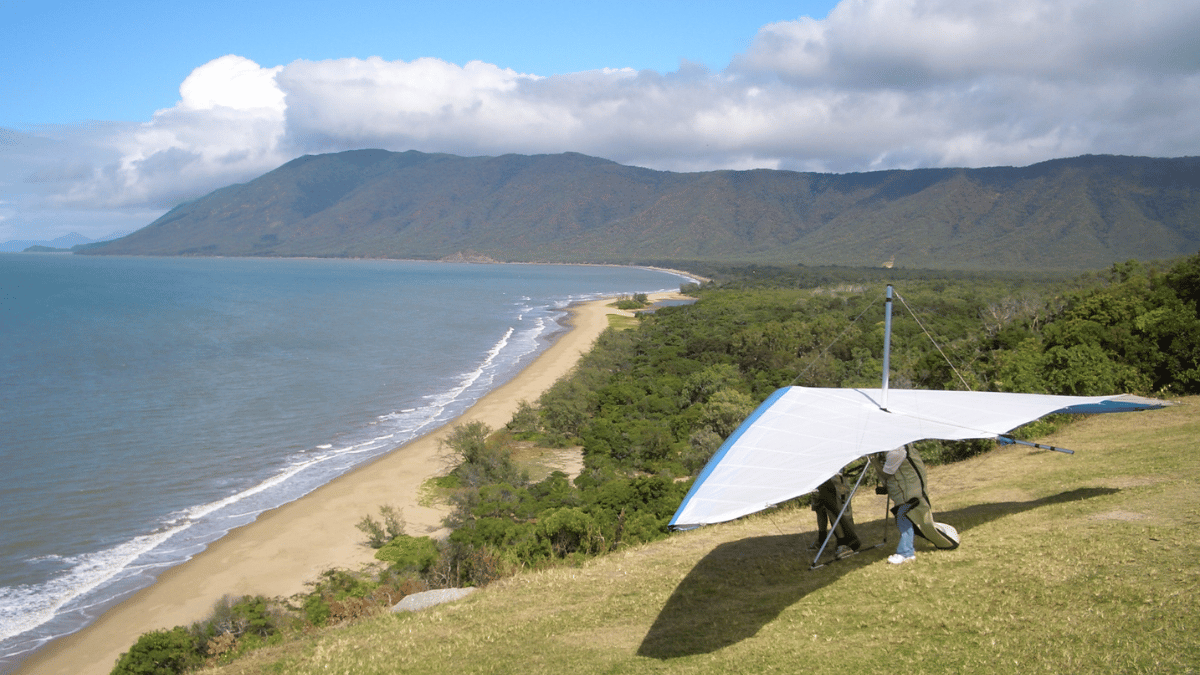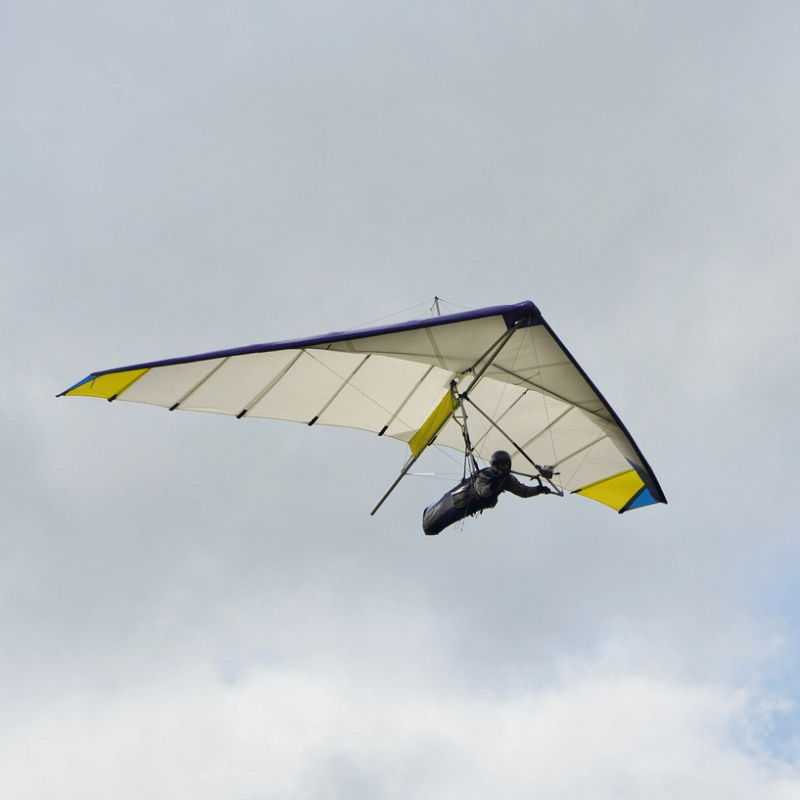We all yearn for that thrilling experience that pushes our boundaries and ignites our sense of adventure.
In this article, I’m going to take you through four exhilarating days of hang gliding lessons in Newcastle, Australia from a fascinating documentary.
From the initial groundwork of theory to the unparalleled thrill of flying solo, you’ll get an insider’s view into the world of hang gliding and the rich learning experiences it offers.
Day One: Hang Gliding Introduction and Theory

Ever wondered what it’s like to start a hang gliding course? The first day is all about laying the groundwork. Mornings begin with theory sessions – crucial for understanding the fundamentals of hang gliding.
Key focus areas may include:
- Understanding Wind Patterns: Learn the fundamentals of meteorology, particularly how wind patterns affect hang gliding.
- Safety Protocols: Safety is paramount in hang gliding. Important topics in this category include safety guidelines, emergency procedures, and the importance of weather conditions in planning flights.
- Equipment Basics: A thorough explanation of the hang gliding equipment, including how to set it up, check it for safety, and understand its mechanics.
- Flight Principles: The basics of aerodynamics as they apply to hang gliding, including how a hang glider is controlled and maneuvered in the air.
This foundational knowledge sets the stage for the practical experiences to come.
Day Two: Conquering the Skies with Theory and Practice
The second day of the hang gliding course was a blend of theory and practice, each complementing the other to enhance the learner’s understanding and skills.
The theory session dove into the complexities of weather patterns, including how different wind conditions can drastically change a flight’s dynamics.
But let’s get to the really exciting part: the hang gliding exercises.
- Cable Flying and Basic Control: This exercise involved cable flying where you practice controlling the hang glider while stationary, focusing on subtle weight shifts and understanding how movements affect the glider.
- Balancing on One Foot: Imagine balancing on one foot with the other crossed behind, managing the hang glider. This exercise teaches balance and control, showing how body weight and posture influence the glider’s stability.
- Lean Forward with Flare Control: In this exercise, you lean forward and perform a small flare, simulating control during flight. It emphasizes the importance of body movement in managing the glider’s altitude and speed, especially during takeoffs and landings.
These exercises build foundational skills in a safe and controlled environment, preparing those new to hang gliding for the more advanced aspects of the sport.
Day Three: The Thrill of the First Solo Flight
Day three of the hang gliding course marked a pivotal point: the exhilarating transition to solo flying.
Refined Weather Analysis in Morning Theory
The day commenced with an intensive theory session on weather analysis. The instructor honed in on interpreting weather conditions, crucial for the autonomy and safety of solo flying. The session also emphasized the practical application of this knowledge in preparation for real-time decision-making in the air.
First Solo Flight: A Leap into Independence
The highlight of the day was the first solo flight, a significant milestone. The documentary producer experienced the thrill of launching into the sky, relying solely on his skills and instincts. This flight was a culmination of the previous days’ learning, from managing takeoff to executing a smooth landing.
The excitement and achievement of day three epitomized the essence of hang gliding – the blend of skill, courage, and freedom.
Day Four: Inland Flying and New Challenges
The final day of the hang gliding course covered inland flying and thus presented a new set of challenges and learning opportunities.
Morning Preparations: Setting the Stage for Inland Flight
The day began with meticulous preparations, underscoring the importance of readiness in hang gliding. The instructor and student team checked their equipment, reviewed safety protocols, and discussed the day’s objectives. This routine helped them mentally prepare for the day’s flights, instilling a sense of confidence and anticipation.
A Shift in Environment: Embracing Inland Conditions
Inland flying presented a different environment compared to the coastal locations of the previous days because inland wind patterns and terrain can influence the flight experience. The anticipation of encountering these new conditions added an exciting dimension to the learning process.
Solo Flight: A Step Further in Skill and Confidence
The solo flight represented the pinnacle of the training journey, a moment where knowledge, skill, and confidence converged. This flight vividly illustrated the freedom, joy, and sheer exhilaration that define the essence of hang gliding.
Reflecting on the course’s end, the documentary producer expressed his love of the sport. He stated, “It’s been so good; if you want to fly, hang gliding is the way to go.”
Watch the Hang Gliding Course Documentary
Ready for a captivating and intimate look at the process of learning to hang glide? Watch the documentary embedded below to be taken on a thrilling journey alongside a participant and instructor duo, Cameron Evans and Tony Barton of Air Sports Newcastle, as they explore the intricacies of hang gliding from the ground up.
Conclusion
So there you have it: a four-day adventure that transforms hang gliding novices into confident solo flyers.
What about you?
Ever felt the rush of flying solo or is it still on your wish list? Tell me all about it in the comments below.
Hang gliding not for you? Explore over 300 hobbies across 5 core categories.

